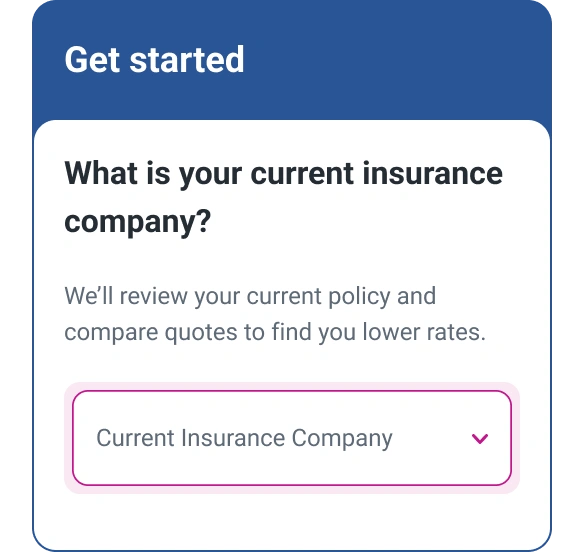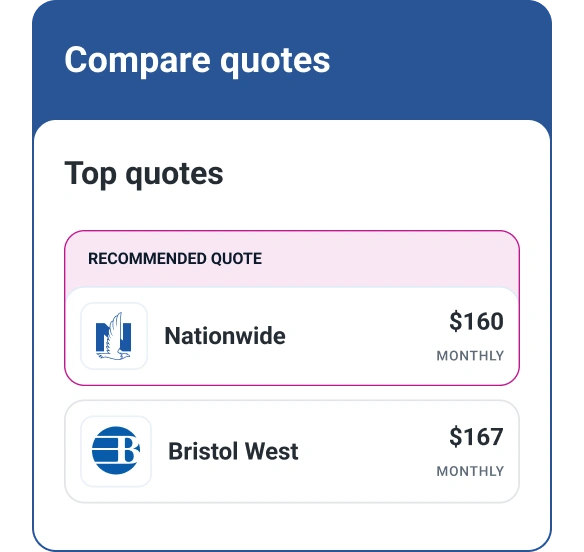How to Compare Car Insurance Rates
Quick Answer
Comparing car insurance quotes is an essential way to make sure you’re getting the most value for your dollar. Decide how much coverage you need, choose your deductible, look for discounts and compare quotes from multiple insurers.

Comparing car insurance quotes allows you to select the best coverage for your needs at the best price. In fact, getting auto insurance quotes from several carriers may save you hundreds of dollars per year since every insurer calculates premiums differently.
Simply determine how much coverage you need, choose your deductible, look for discounts and compare quotes from multiple insurers. This simple strategy can help you ensure you get the best value from your policy.
1. Determine the Types of Coverage You Need
Most states require you to carry liability coverage to help cover another driver's car repairs or medical bills if you cause an accident. However, you may want more liability insurance than your state requires because the cost of accidents often exceeds the minimum limits. If you're found liable for bills that cost more than your policy covers, you'll have to pay the difference out of pocket.
In this case, a court can order you to use money from your savings or sell your possessions to make up the difference. Consider adding up the value of your assets, including your car, home, savings and business, and purchasing enough coverage to protect your assets in a worst-case scenario. While choosing a higher liability limit will likely increase your premiums, it may be worth it to help you protect your assets after an expensive collision.
If your assets' value exceeds your car insurance maximum, consider getting umbrella insurance, which provides additional liability protection.
Types of Auto Insurance Coverage
The six most common types of car insurance coverages you can select are:
- Liability coverage: All states except for New Hampshire and Virginia require drivers to carry a minimum level of liability coverage. This coverage kicks in—up to the policy's limits—if you're found liable for an accident resulting in damage or injuries to others.
- Comprehensive coverage: This coverage pays for damages to your vehicle due to a non-collision accident, such as severe weather, fire and theft. Comprehensive is optional in all states, but your lender may require you to carry it.
- Collision coverage: Collision insurance covers damages when your car is involved in an accident with another vehicle or object. Like comprehensive coverage, states do not require it, but your lender may.
- Uninsured and underinsured motorist protection: Most states require drivers to carry uninsured and underinsured motorist (UM/UIM) coverage. This insurance covers damages sustained when the driver doesn't have auto insurance or whose policy limits are too low to pay for your bills.
- Personal injury protection: Check your state's requirements to see if personal injury coverage is mandated in your state. This protection typically covers medical treatment, lost wages, funeral expenses and other accident-related expenses.
- Medical payments coverage: This optional coverage can help pay for medical bills for you and your passengers after an accident. It may also cover your medical expenses if you're a passenger in another person's vehicle, or if you are a pedestrian and are struck by a vehicle.
2. Choose Your Deductible
A deductible is what you pay out of pocket on a covered claim before your insurance kicks in to cover the rest. Comprehensive, collision and other coverages may include deductibles you can adjust to suit your needs.
Increasing your deductible is one way to lower your insurance premiums, but it also means you'll pay more of your own money before your insurance company steps in to pay for a covered loss.
For the most accurate apples-to-apples rate comparison, use the same deductible amounts with each insurance company you contact.
3. Look for Discounts
The average car insurance premium was $1,950.96 in 2021, according to insurance marketplace Gabi®—a part of Experian. But you may be able to save money by taking advantage of the various discounts that insurers offer.
Ask each insurance company you're considering if you're eligible for some of these common car insurance discounts:
- Alternative fuel discount for hybrids, electric cars and other alternative-fuel vehicles.
- Anti-theft or safety device discount for safety and anti-theft systems such as alarms, anti-lock brakes and airbags.
- Bundling discount for purchasing more than one type of insurance with the same insurance carrier, such as homeowners and auto insurance.
- Driver's education discount for successfully completing a driver safety course.
- Low mileage discount for driving less than 10,000 or 12,000 miles annually. Some insurers may charge you on a per-mile basis on top of your base premium, which could work to your advantage if you drive sparingly.
- Safe driver discount for driving a specific number of years with no accidents or moving violations. You can earn discounts up to 22% through Geico after five years of accident-free driving.
- Student discount for your high school or college student with good grades. For example, State Farm offers discounts up to 25% for students with good grades.
4. Compare Quotes From Multiple Auto Insurers
Prices vary from insurer to insurer, so it pays to shop around and compare car insurance quotes. Getting multiple quotes is an effective way to ensure you get the best deal available.
You can find insurers by calling companies directly or accessing their websites online. Also, your state insurance department may be able to provide you with price comparisons of various auto insurance companies. Use Experian's auto insurance comparison tool to compare your current coverage against new rate quotes side by side.
Since one of the primary purposes of auto insurance is to protect you financially after an accident, you'll want to choose a financially stable provider. Rating companies like AM Best and Standard & Poor's are a great source of financial health information for most major auto insurers.
When you're comparing car insurance quotes, it's essential to use the same deductibles and coverage parameters with each insurance company to ensure an accurate apples-to-apples comparison.
It's also wise to be as accurate and forthcoming as possible with the information you give for your quotes. If the information you provide is incomplete, the rate you receive for your actual policy may differ from your initial premium quote.
What Factors Affect Your Car Insurance Rates?
Auto insurance companies consider several factors when setting your premiums. While there's not a lot you can do about some of these factors—such as your age and the population of your city—you may have some control over other rate-determining factors.
The following are some of the most common factors impacting your car insurance rates:
- Where you live: Auto insurance rates vary widely from state to state. Your insurance may cost more if you live in an area with higher crime rates or a greater likelihood of natural disasters.
- Your demographics: Insurance companies believe your age, gender, marital status and other characteristics may make you less risky to insure. Statistically, women are involved in fewer accidents, including severe and DUI-related accidents, than men. As such, women may receive lower premium quotes than men.
- Your vehicle: The vehicle you drive is another factor that affects your policy premiums. For example, you may pay more if you drive an expensive car that is costly to repair.
- Your driving record: Generally, the cleaner your driving record, the lower your premium. Also, newer drivers without an insurance track record may pay higher premiums.
- Your coverage: The more insurance coverage you purchase, the more likely you'll pay higher premiums. Along these lines, a driver with a full coverage policy typically pays higher premiums than someone with a policy that merely meets their state's minimum coverage requirements.
The Bottom Line
Comparing auto insurance rates is a simple and effective way to make sure you get the best value for your policy. If you're wondering how to compare car insurance rates online, you can check your rate in minutes for free using Experian's auto insurance comparison tool.
Don’t overpay for auto insurance
If you’re looking for ways to cut back on monthly costs, it could be a good idea to see if you can save on your auto insurance.
Find savingsAbout the author
Tim Maxwell is a former television news journalist turned personal finance writer and credit card expert with over two decades of media experience. His work has been published in Bankrate, Fox Business, Washington Post, USA Today, The Balance, MarketWatch and others. He is also the founder of the personal finance website Incomist.
Read more from Tim

